Blagdon Lake Birds
October 2018 News
Monday 1st October [Sunny, though not as warm as recently.]
I made a couple of very brief visits to the lake at either end of the day. I saw a handful of Black-tailed Godwits Limosa limosa this morning, but none this evening. I also saw 14 Great White Egrets Ardea alba, 7 Little Egrets Egretta garzetta, and 3 Greenshanks Tringa nebularia. Hopefully, I'll have more time to look around tomorrow.
Most of the day was taken up with checking the 23 bat boxes at Barrow Reservoirs, in which we've never found any signs of use by bats - until today! I opened a box to find 3 Soprano Pipistrelles Pipistrellus pygmaeus. If we'd found no bats, we were going to remove all the boxes and put them up at Chew and Blagdon where they will certainly be used. So, we had to compromise and leave the box that was being used, along with 3 others nearby, and remove the others. This afternoon we put 10 of the boxes up at Chew Valley Lake.
Tuesday 2nd October [Bleak, grey & windy.]
The greens of summer are rapidly disappearing and being replaced by the browns of autumn. Bird numbers are on the wane from the high of a few weeks ago and despite a careful search there wasn't much to excite today in truth. I noted 8 Great White Egrets Ardea alba, although there may have been more in Butcombe Bay that I didn't see, just 1 Little Egret Egretta garzetta, 14 Black-tailed Godwits Limosa limosa, 3 Greenshanks Tringa nebularia, and 35 Pintails Anas acuta. The Aythya influx the other day included quite a few Pochards Aythya ferina, but they seem to have moved on too.
Wednesday 3rd October [Sunny, less windy & warmer than yesterday.]
I walked the south side of the lake today. Not only was I birding, as usual, but I was on the look-out for Ivy Bees Colletes hederae. This new colonist from continental Europe is a solitary bee that often burrows colonially. It was found in Dorset in 2001 and has been expanding west and north. I eventually spotted some on Ivy along the pine belt at Long Bay, and again at Hellfire Corner. It has been in our area for a number of years and it was about time I found it at the lake.
The birds included 12 Great White Egrets Ardea alba, 11 Black-tailed Godwits Limosa limosa, 3 Greenshanks Tringa nebularia, and 3 Ringed Plovers Charadrius hiaticula. Also noteworthy were a House Sparrow Passer domesticus in the hedge at Flower Corner, and a Small Copper Lycaena phlaeas on the wing at Hellfire Corner.
This afternoon I picked up a Soprano Pipistrelle Pipistrellus pygmaeus bat from Middle Ellick stables, Blagdon, that had been grounded. It looks like it has trauma to the right humerus and will go to our carer Kiri Green at Bristol Bat Rescue for assessment. If the bone is broken I fear it may be euthanized, but let's hope for the best.
Friday 5th October [Mainly cloudy but warm]
I haven't been to the lake for a couple of days for domestic reasons, but Mark Hynam kindly sent me news this afternoon as follows: 26 Black-tailed Godwits Limosa limosa, 6 Ringed Plovers Charadrius hiaticula, a Ruff Calidris pugnax, 15 Great White Egrets Ardea alba, 4 Little Egrets Egretta garzetta, and 22 Pintails Anas acuta.
I'm supposed to be leading a walk at the lake for BOC tomorrow morning at 0930 hrs, but the weather forecast looks pretty dire!
Saturday 6th October [Wet & cold]
Three intrepid BOC members met up with Mark and I this morning in the rain. We did have a look, but used our cars rather than our feet to get around. It was a bit disappointing after all the birds that have been through in the last few weeks, and the only things really worthy of mention were 12 Great White Egrets Ardea alba, and singles of Black-tailed Godwit Limosa limosa, Greenshank Tringa nebularia, and Snipe Gallinago gallinago. In addition to the egrets and waders, we saw a Common Gull Larus canus and I counted 41 Pintails Anas acuta.
As of tomorrow, I will be in Trinidad for another bat expedition, returning on Monday 16th. If you visit the lake, please copy me in with your news and I'll keep posting it, along with our escapades in the Caribbean. I think this will be my fourth trip to Trinidad, but I've always gone in spring in the past. It will be interesting to see how things differ bird and bat-wise by going now, in the rainy season! More skeeters in the swamps, I've no doubt...
Sunday 7th October
No news today, and happy to be getting on the plane from a cold Blighty to Trinidad, to join the Trinibats 2018 expedition.
When we arrived at the Hacienda Jacana we had a lovely meal, settled in, and put some nets up to trap around the Lodges. We caught quite a few bats and after having been up for 25 hours I crashed into bed!
Monday 8th October
After a leisurely morning around the Hacienda looking at the wildlife, we jumped into our minibus and drove up to the north west coast and boarded a boat to visit a sea cave where there are Greater Bulldog Bats (aka Fishing Bats) Noctilio leporinus. Most of the team went into the cave to see the bats, but having been before I didn't. However, as it got dark so the bats emerged over the sea and started to fish for small fingerling Sardinella.
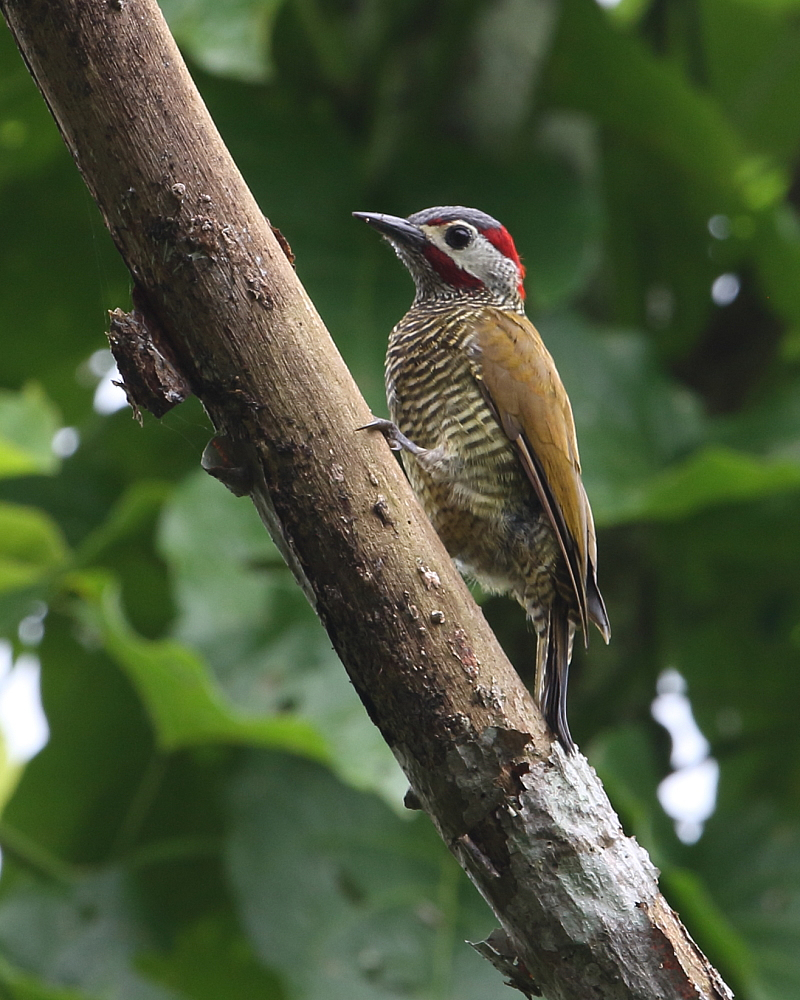
Tuesday 9th October
A visit in the morning to Arena Forest for a look around and to decide where we were going to trap in the evening. Ken Anstey and I ran a couple of nets in the evening along a ridge and caught a good number of bats, although the variety of species wasn't great where we were.
Wednesday 10th October
The day I was fearing the most, saw us make the longish drive to the infamous Nariva Swamp - home of the mosquito (well, actually, millions of the most vicious mozzies you'll ever come across)! I didn't go into the forest becauase I feared getting nailed by the little blighters, and waited for the others outside while they went for a walk inside during the day. I've been in a few times before anyway. I wandered around with my camera at the edge of the forest and looked after the gear. When the group came out some hours later, they said it was horrendous. So, for the evening batting session I volunteered to man the processing station on the edge of the forest. But even that wimpy decision didn't save me - I got hammered all over my body, despite wearing a mozzie jacket and repellant. There was, however, the most amazing number of bats flying all around us while we were at the edge of the forest - hopefully they were eating the mozzies.
Thursday 11th October
Despite getting back to the Hacienda very early this morning, we were up again in short order for a visit to Caroni Swamp, a mangrove swamp set aside as a bird sanctuary where Scarlet Ibises, Trinidads national bird, hunt crabs among the roots at low tide. Whilst we saw a Cook's Tree Boa, known locally as the Cascabel, the high tide meant that we saw few shorebirds, other than one Greater and 2 Lesser Yellowlegs, and a number of Spotted Sandpipers. Red-capped Cardinal, Bicolored Conebill and Straight-billed Woodcreeper were nice birds to see, as were a handful of Yellow Warblers, but I dipped 2 American Redstarts. The usual egrets, Snowy, Cattle, and Great, plus Little Blue, Tricolored and Yellow-crowned Night Herons, American Pygmy, Green and Ringed Kingfishers and Lineated Woodpecker, were more standard fayre.
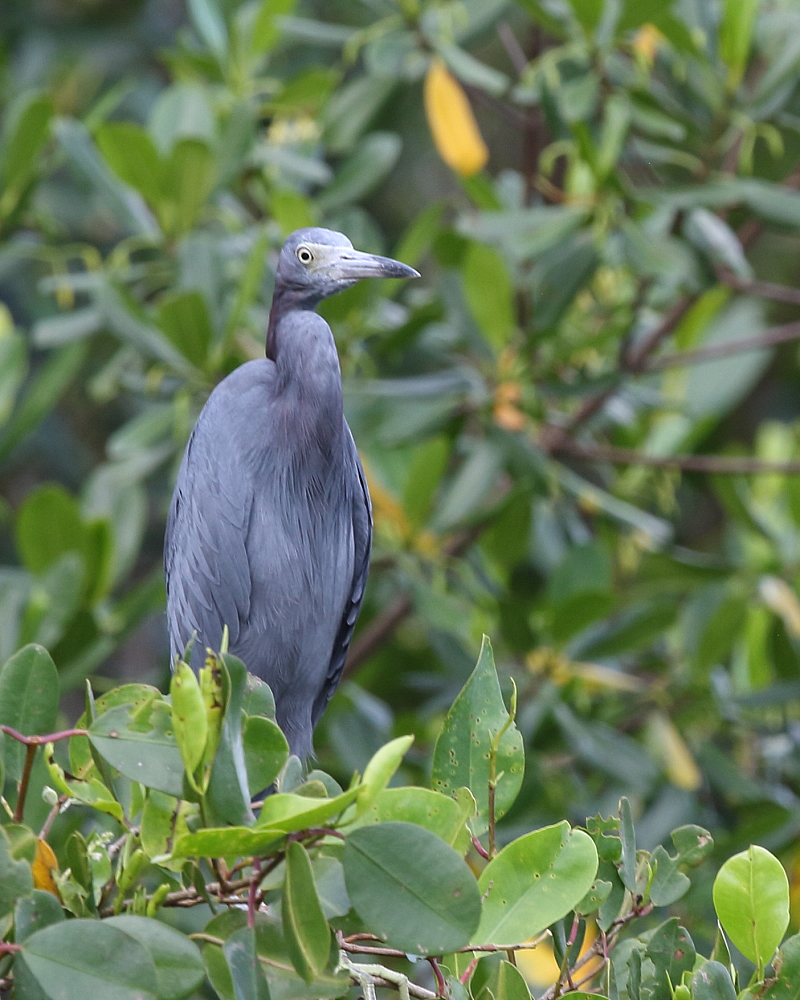
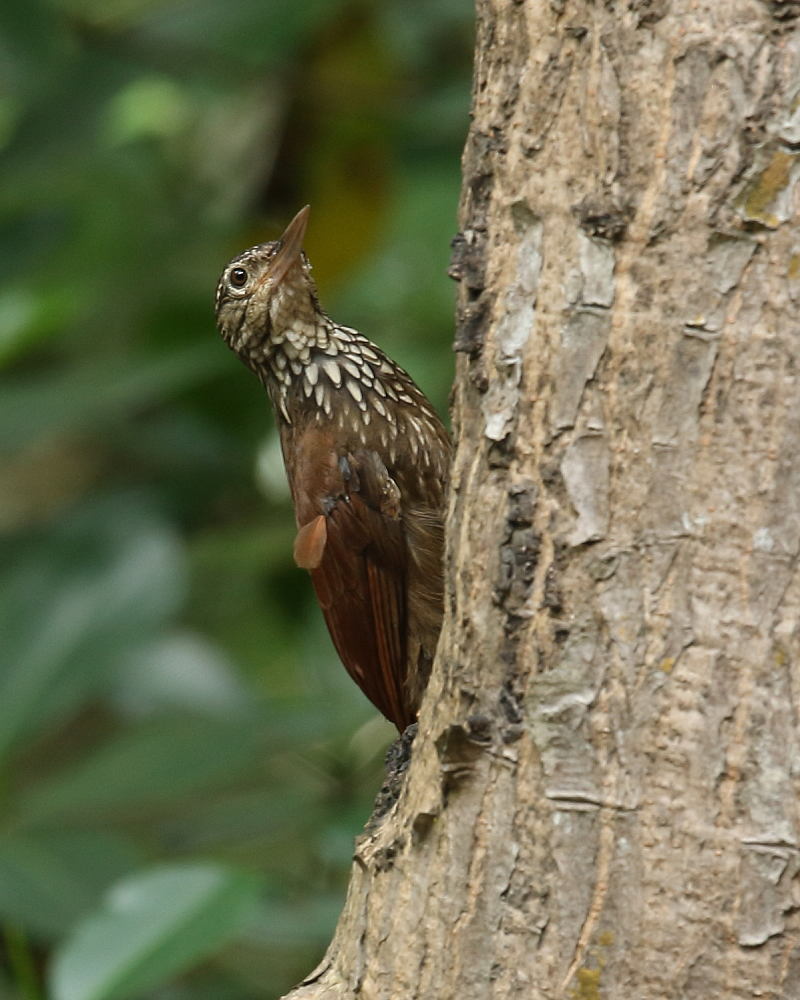
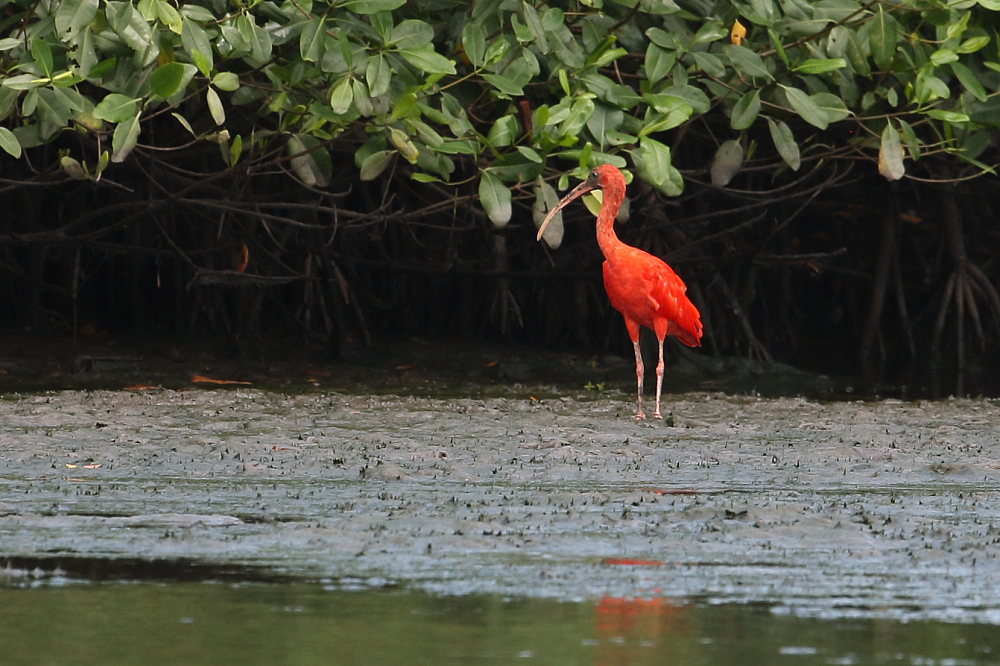
After lunch most of the team went back to two different areas of Arena Forest to trap in the evening, but I decided to stay at the Hacienda and netted bats with Bob & Jude, and Ken Anstey. With two nets we caught 27 bats of 7 species and packed up at 2200 hrs.
Friday 12th October
This morning we went to visit a WWII ice house where we saw thousands of roosting bats, then after lunch we drove up into the hills to Asa Wright Nature Centre to trap and photograph bats in the forest. It was an amazing session during which the team caught circa 280 bats of 19 species, while Geoffrey and Daniel did a show-and-tell for guests, and had a long visit from the Environment Minister who came to see what we were doing, and eventually stayed until after midnight, despite not leaving parliament until 2000 hrs.
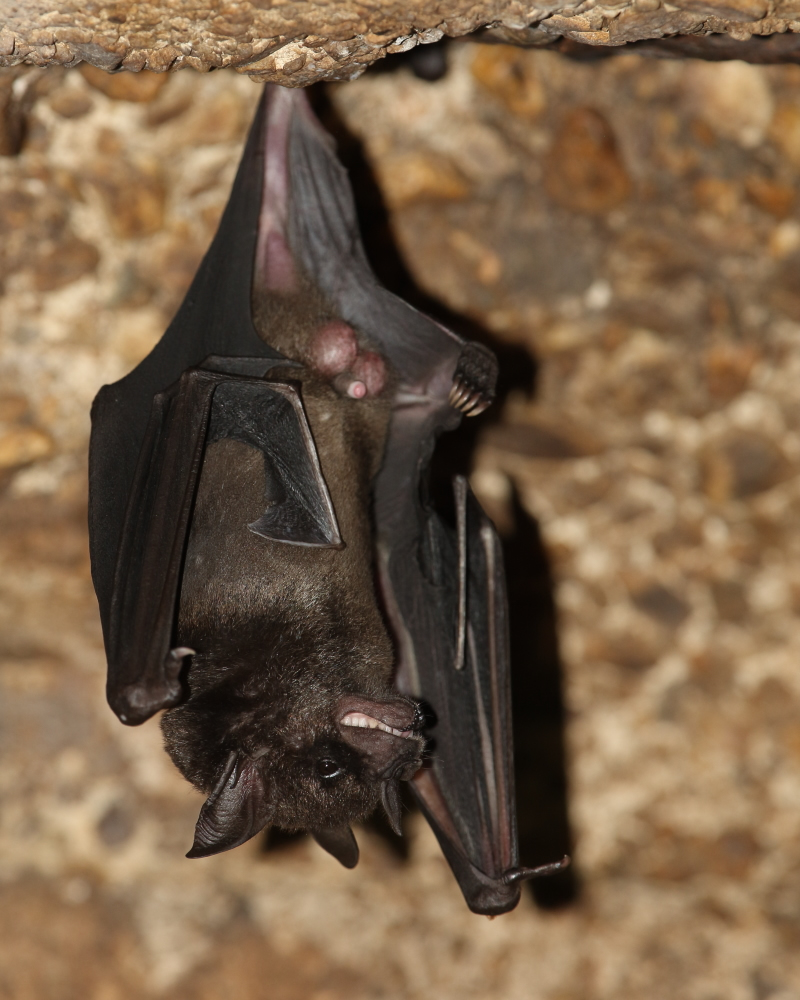
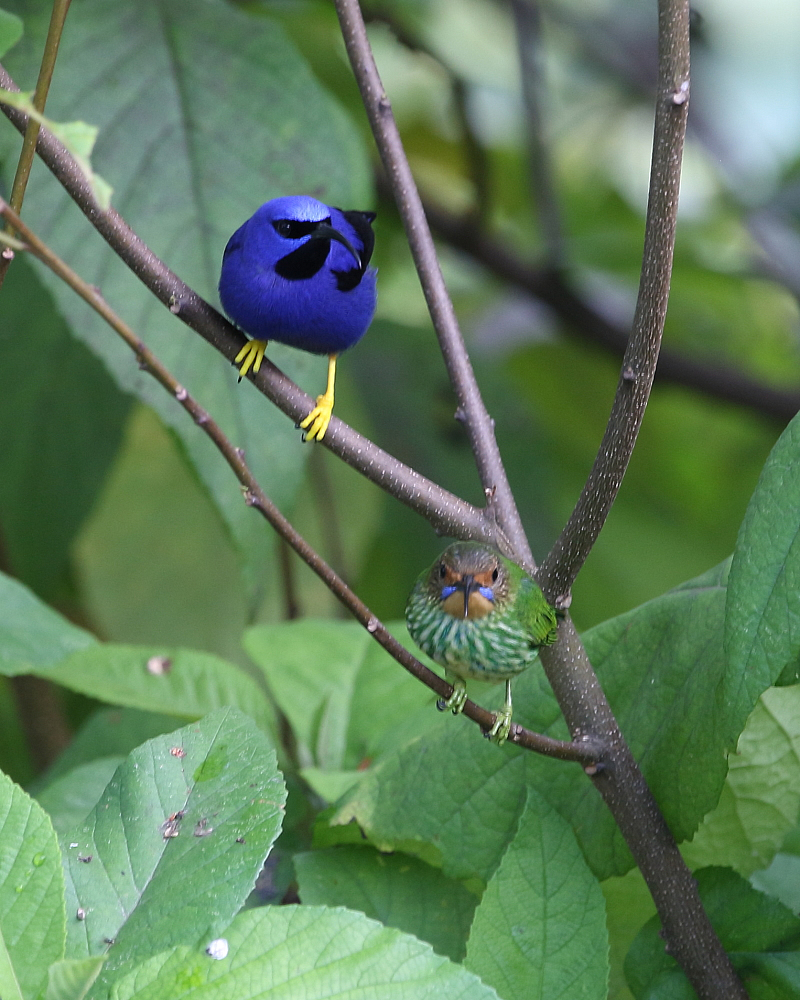
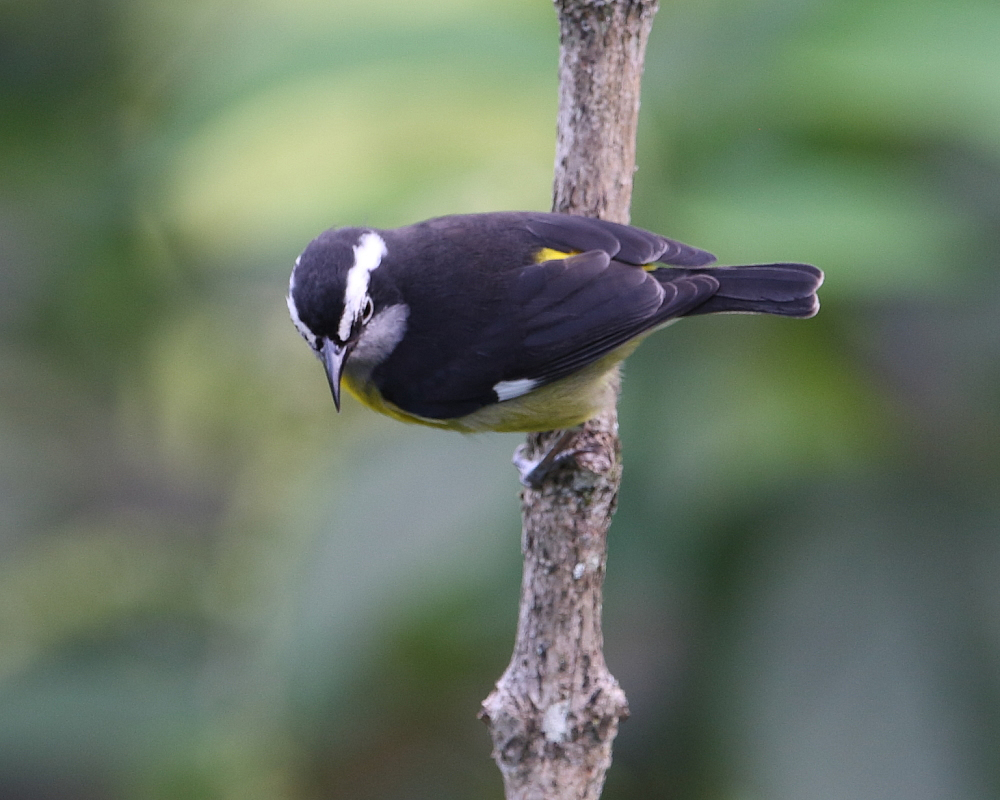
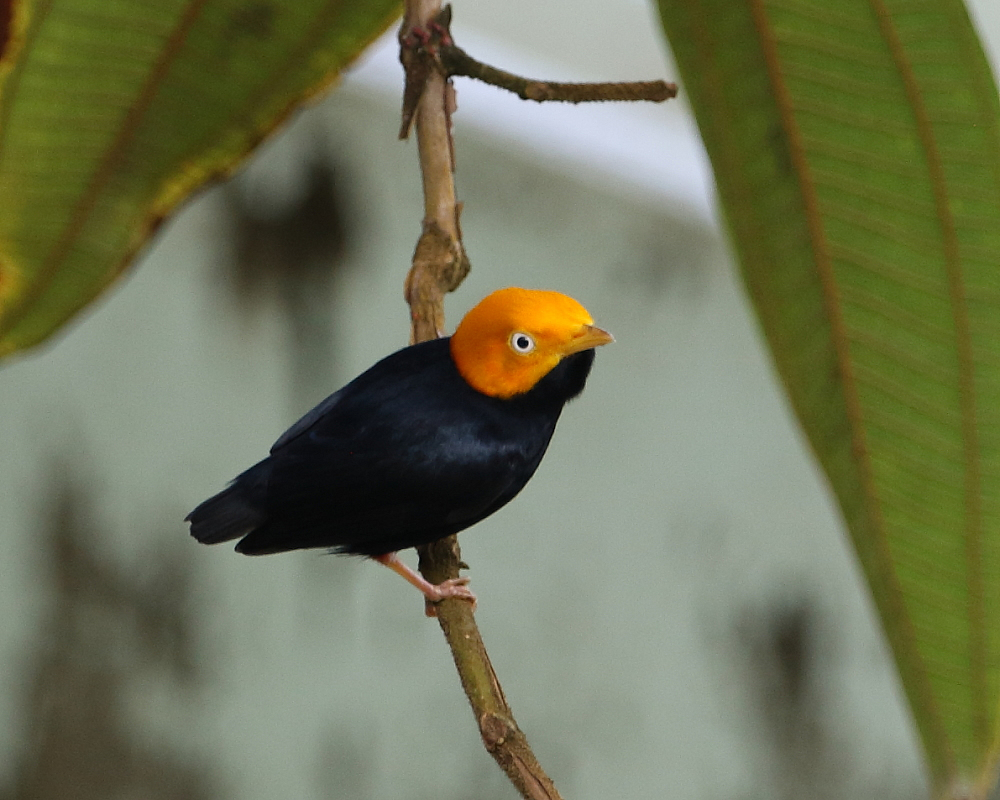
I spent the evening with Denise and JoEllen using some of Daniel's kit to try and take pictures of nectar feeding bats visiting the hummingbird feeders.
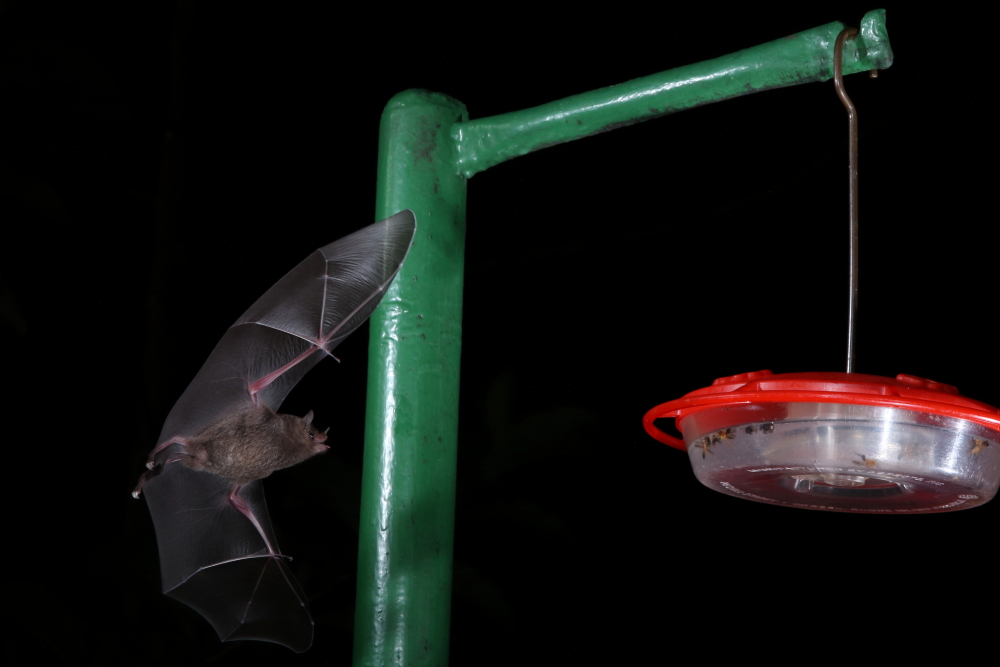
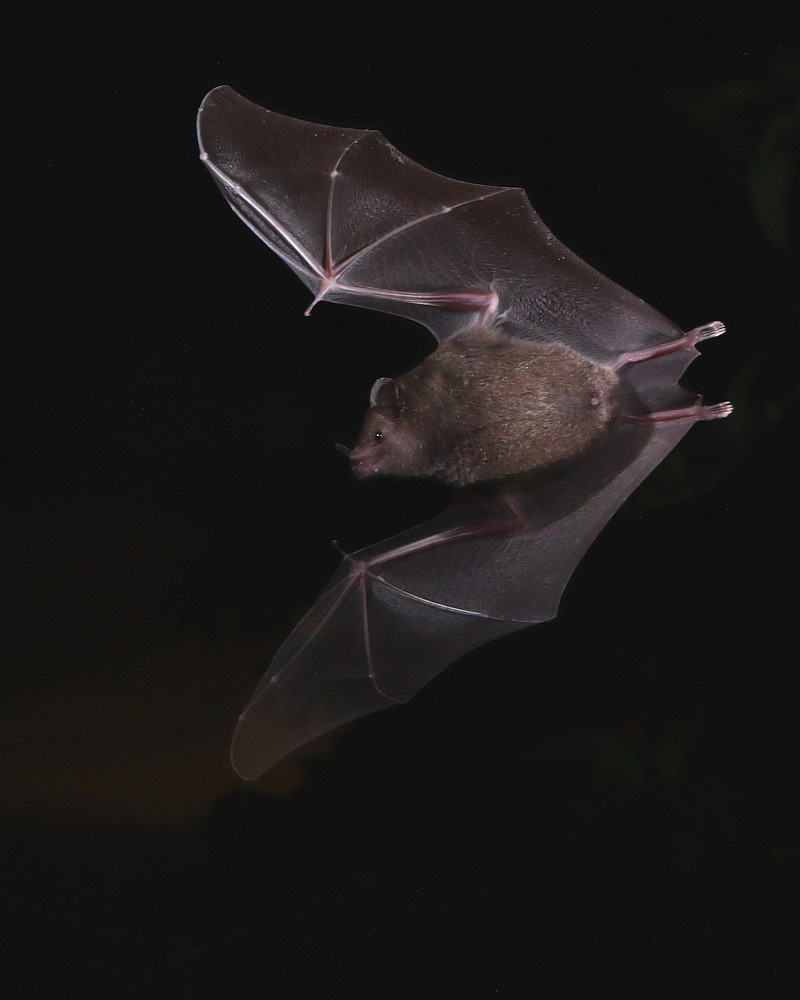
Saturday 13th October
Finally, a morning off! We didn't get to bed until about 0330 hrs last night and many of us weren't in any hurry to get up early this morning. A Limpkin visited the Hacienda, but I didn't get any pictures of it. Some of the team went off mid-afternoon to visit Tamana Hill Bat Cave and some of us stayed back at base to chill out in the heat and humidity.
I videoed the emergence of bats from a box put up on the side of our Lodge a couple of years ago, while Denise and Bob counted them and recorded the calls, Daniel having already noted that there were 2 spp. in there with a quick visual check the previous day.
Sunday 14th October
Still no news from the lake while I've ben away I'm afraid.
In Trinidad we spent the morning packing our things ready for the trip home overnight, and did a tally of our results. It was a lovely team of bat workers, with a few 'old hands' from previous expeditions joined by JoEllen from California (who I travelled with in Thailand last November), Christiane from Germany, and Leanne from Notts Bat Group.
Monday 15th October [Grey & misty all day with steady drizzle/rain]
I drove back to Bristol this morning, with Ken and Denise, before going down to the lake this afternoon to see what the recent bad weather had brought in despite my having been awake for the last 27 hours. There had been a slight rise in water level, but nothing like I'd expected, so there were still large numbers of Mute Swans Cygnus olor present, and it won't be long before the first Bewick's Swans arrive, I hope. I saw 8 Great White Egrets Ardea alba, 2 Little Egrets Egretta garzetta, 2 Black-tailed Godwits Limosa limosa and a Greenshank Tringa nebularia of note, and counted 42 Wigeon Mareca penelope, 21 Meadow Pipits Anthus pratensis, and 9 Barnacle Geese Branta leucopsis at Top End.
Tuesday 16th October [Grey & misty start, with some sunny spells later. Warm.]
The day started with a trip onto the Mendips to do a round of Dormouse boxes with Ken Anstey, during which we found an adult ♀ of over 20 grams, and a juvenile ♂ weighing in at just 10 grams. It will be touch and go whether the latter makes it through the winter, unless he puts on some serious weight before it starts to get cold.
Acting on an email from Mike Bailey at Chew Valley Ringing Station on Sunday, Ken and I went on to check two bird boxes in which they'd found bats. Obviously they left them undisturbed, and asked if we'd like to have a look as we're licensed. In one box there was a dead Soprano Pipistrelle Pipistrellus pygmaeus, and in the other there were another 3 (live) Soprano Pips.
I then had time for two visits to the lake this afternoon, during which I saw 8 Great White Egrets Ardea alba, 2 Little Egrets Egretta garzetta, a Common Sandpiper Actitis hypoleucos on the dam, 4 Black-tailed Godwits Limosa limosa at the Lodge, a Peregrine Falco peregrinus 'buzzing' the birds on Tiny's Shallow, a Whinchat Saxicola rubetra at Holt Bay, 3 Dunlin Calidris alpina at Bell's Bush, 20 Pintails Anas acuta, and a site record 103 (inc. 15 juvs.) Mute Swans Cygnus olor. Tomorrow, we will be carrying out the WeBS count.
Wednesday 17th October [A calm, grey, day.]
Rob Hargreaves, Lucy Delve and I carrried out the WeBS count this morning from 0950 to 1230 hrs with the water level still at about 45%. Top counts were the 1120 Teal Anas crecca, 805 Tufted Ducks Aythya fuligula, 549 Coots Fulica atra, and 411 Mallards Anas platyrhynchos. Additional noteworthy sightings included 86 Lapwings Vanellus vanellus, 4 Black-tailed Godwits Limosa limosa, 7 Great White Egrets Ardea alba, 2 Little Egrets Egretta garzetta, a Common Sandpiper Actitis hypoleucos, a Peregrine Falco peregrinus, a Stonechat Saxicola torquatus (where the Whinchat was yesterday, rather amazingly), and a steady passage of Skylarks Alauda arvensis passing over. Lucy Delve, who was helping with the count today, thought she heard sub-song of a Cetti's Warbler Cettia cetti in the reeds at Pipe Bay, but we didn't hear it again. Full details of the count are on the WeBS Page.
Thursday 18th October [Sunny & cooler, with a chilly breeze.]
Yesterday's Canada Goose Branta canadensis count missed a large part of the flock, which was in fields on the north side of the lake, so I counted again today and made it 229, which I will add as a supplementary count to the WeBS database. Today, there were 3 Black-tailed Godwits Limosa limosa in front of the Lodge, with a juv. Ringed Plover Charadrius hiaticula right out on Tiny's Shallow, where an adult Yellow-legged Gull Larus michahellis was loafing with the other large gulls. At Top End I saw a Greenshank Tringa nebularia and 2 Dunlin Calidris alpina, but I didn't count the Lapwings Vanellus vanellus. The egrets were scattered around the lake, and I made it 9 Great Whites Ardea alba and 4 Little Egrets Egretta garzetta when driving back from Top End, so the count should be reliable for early afternoon.
A fisherman pointed out to me today that a birder gave the combination lock number to the occupants of a car who promptly drove to Rainbow Point and had a picnic! He wasn't happy because he'd already refused to give them the number. I don't know if they had permits to be there, but I shouldn't need to point out that access is restricted, and it goes without saying that the gates are locked for security reasons. The combination lock number is only given to birders so that they may access the hides by car, which is especially helpful for the less mobile among us, so please think about site security and act responsibly, or I'm sure we'll find ourselves denied the privilege.
Friday 19th October
I took a day out from the local scene today to go and see the Grey Catbird at Land's End, Cornwall. I also saw a Little Bunting, Yellow-browed Warbler, 2 Black Redstarts and a few Choughs at Porthgwarra.
Saturday 20th October [Sunny]
I took a call from Simon Isgar this morning to tell me a Tawny Owl Strix aluco had become entangled in nets at the Hatchery and cut free by the fisheries staff. However, it needed to be checked out due to apparent damage to one of its legs, so he brought it to me to take to a carer in Portishead, who removed the remaining netting. It appeared that the damage was bad, but superficial, and that the claw was apparently still functional, which is hopeful. It's going to be kept in for observation.
This afternoon, Mark Hynam rang me shortly after I'd got back home to tell me there was a Spoonbill Platalea leucorodia at Top End. The bird was greyish and had extensive black feathering to the wing tips, together with grey-black legs so was an immature in its first or second year. We met up and had a good look around from Bell's Bush, where we saw 8 Great White Egrets Ardea alba, a Little Egret Egretta garzetta, 2 Snipe Gallinago gallinago, 2 Dunlin Calidris alpina, 2 Black-tailed Godwits Limosa limosa, a Garganey Spatula querquedula, and 236 Lapwings Vanellus vanellus (counted by Mark). One of the Great White Egrets appeared to be Red AAS, a bird from the Somerset Levels, and there was another with a metal ring on its right tarsus, but no darvic. Later, when we were checking the gulls at dusk we both heard a Cetti's Warbler Cettia cetti sing from the Pipe Bay reeds, so Lucy was undoubtedly right last Wednesday - she's got good ears, so I'm not in the least surprised.
Sunday 21st October [Sunny]
There was an angling competition on the lake today, and quite a lot of general disturbance, which resulted in far fewer birds than of late. There was just a single Black-tailed Godwit Limosa limosa at Polish Water, and the Cetti's Warbler Cettia cetti sang again from Pipe Bay reeds, while the showy ♂ Pintail Anas acuta was on Home Bay Point, with another juv. or ♀ at Top End. There were at least 6 Great White Egrets Ardea alba (including Red AAS), a Little Egret Egretta garzetta, 3 Dunlin Calidris alpina, a single Black-tailed Godwit Limosa limosa, 290 Lapwings Vanellus vanellus, a pair of Kestrels Falco tinnunculus, 15 or so Linnets Linaria cannabina, and Mark and I heard a Redpoll Acanthis flammea fly overhead at Bell's Bush. At Top End I saw a Migrant Hawker Aeshna mixta and late Speckled Wood Pararge aegeria still on the wing.
Mark Hynam added the Common Sandpiper Actitis hypoleucos to the day list.
Monday 22nd October [Sunny with a cool breeze]
It was a case of slim pickings this morning, so there's not a lot to report. There was a Common Sandpiper Actitis hypoleucos on the dam, a Black-tailed Godwit Limosa limosa on Tiny's Shallow, and at Top End there were 2 Dunlin Calidris alpina and a juv. Wheatear Oenanthe oenanthe. The regular French-ringed Great Black-backed Gull Larus marinus Green L42 still has the ring trapped over it's foot, causing the bird considerable discomfort I'd imagine. Elsewhere around the lake were 6 Great White Egrets Ardea alba (including Red AAS), 2 Little Egrets Egretta garzetta and 7 Barnacle Geese Branta leucopsis with the Canada Geese Branta canadensis. I saw a couple of Hornets Vespa crabro still on the wing, but their days must be numbered now it's turned colder.
Tuesday 23rd October [Sunny]
There's not a lot to transcribe from my notebook into the blog today I'm afraid. There were 5 Great White Egrets Ardea alba (including Red AAS), a Little Egret Egretta garzetta, and 7 Barnacle Geese Branta leucopsis with the Canada Geese Branta canadensis. The Black-tailed Godwit Limosa limosa was still in front of the Lodge, and I counted 299 Lapwings Vanellus vanellus at Top End.
Mark Hynam texted later to say he'd seen a juv. or ♀ Goosander Mergus merganser fly down the lake towards the dam at 1725 hrs.
Tomorrow, Ken Anstey and I will be doing the last bat box check of the year at Blagdon Lake.
Wednesday 24th October [Sunny]
I spent most of the day at the lake doing bat boxes with Ken Anstey, then I went home for a cuppa mid-afternoon, before going back late afternoon to have a look from the Lodge with Mark Hynam. During the day I saw 2 Great White Egrets Ardea alba, 2 Little Egrets Egretta garzetta, and the single Black-tailed Godwit Limosa limosa. Mark saw Lapwings Vanellus vanellus at Top End, and found a Shelduck Tadorna tadorna in front of the Lodge together with two ringed gulls. Both gulls were familiar birds, adult Herring Gulls Larus argentatus Orange K+K and Blue G:P. While we were looking through the gulls in front of us, one stood out from the crowd, that I feel pretty sure was a juvenile/1st-winter Caspian Gull Larus cachinnans. Its head was small, pale, and classically pear-shaped, and although it was difficult to get a good look at the leg structure, the bird stood head and shoulders above the Herring Gulls around it. This may have been due to longer legs, but could also have been due to a more upright stance, I couldn't really decide. The eye was dark and apparently positioned forward of the typical Herring Gulls. The overall colour was paler than the other juvenile/1st-winter gulls, due to the white-fringed feathers. Unfortunately, I didn't get details of greater coverts or tail because it sat down in the throng at this point, while Mark was getting his camera. Shortly afterwards, the flock all took off and scattered when disturbed by a boat close by. We couldn't find it subsequently. Let's hope it shows up again tomorrow - it'd be nice to prove a first for the lake.
Thursday 25th October [Sunny]
I didn't visit the lake today. Mark Hynam had a walk at the lake this morning and reported 3 Great White Egrets Ardea alba, a Little Egret Egretta garzetta, a Black-tailed Godwit Limosa limosa, a Water Rail Rallus aquaticus, a flock of 28 Linnets Linaria cannabina and a Cetti's Warbler Cettia cetti.
Friday 26th October [Sunny & cold]
After a visit to Chew Valley Lake this morning, I came back to Blagdon for a look around. Mark Hynam and I spent several hours checking the place out, but it was a bit of a grind...
We saw 195 Lapwings Vanellus vanellus, a single Great White Egret Ardea alba, a Black-tailed Godwit Limosa limosa, and spent a while looking through the gulls at the Lodge. Adult Herring Gull Larus argentatus Blue G:P was there again, as was adult Mute Swan Cygnus olor Yellow DPH, a bird I've not seen before. I'll send details to the BTO to find out more about it. I went down at last light to look through the gulls again and, unusually, saw lots of Herring Gulls in the roost. I heard the Cetti's Warbler Cettia cetti sing a few times from Pipe Bay reeds, and finished by counting 62 Great Crested Grebes Podiceps cristatus from the Lodge.
Sunday 28th October [Sunny & cold]
I spent all day at Chew Valley Lake with Ken Anstey and Mark Hynam checking the bat boxes and cleaning them out. We found just 5 Soprano Pipistrelles Pipistrellus pygmaeus, and 4 of those were in the first box we checked! They've obviously decided to hunker down somewhere with the onset of the recent cold snap. While we were there, Charlene, spotted a Migrant Hawker Aeshna mixta at Moreton hide car park and I counted 8 Green Sandpipers Tringa ochropus in Heron's Green Bay.
On the way home I had a brief look at Blagdon Lake, although I only had my binoculars with me. I saw 3 Great White Egrets Ardea alba, a Little Egret Egretta garzetta, the lone Black-tailed Godwit Limosa limosa, and at Top End an Egyptian Goose Alopochen aegyptiacus and lots of Lapwings Vanellus vanellus.
Monday 29th October [Sunny & cold]
Mark Hynam found 2 adult Bewick's Swans Cygnus columbianus at Bell's Bush this morning, one of which had a darvic that we read as 'White BCL', making it Winkey, a swan I first recorded at Blagdon in 2006. Winkey was originally paired with another swan named Tinkie by the WWT at Slimbridge, however, he paired up with another bird subsequently, dubbed Winker. Sadly, they've arrived without young this year. Also new in, were 4 Goldeneye Bucephala clangula, 2 brownheads, a 1st-winter ♂ and an adult ♂.
Other birds included a spanking adult Mediterranean Gull Ichthyaetus melanocephalus at Top End, with a host of bathing and loafing gulls that flew in off fields being ploughed to the east of the lake, 3 Great White Egrets Ardea alba, one adult Little Egret Egretta garzetta, a Common Sandpiper Actitis hypoleucos on the dam and the Black-tailed Godwit Limosa limosa. I saw a Skylark Alauda arvensis (also heard others) and 5 Stock Doves Columba oenas fly west while we were scanning the Top End birds, and Mark saw a large flock of Linnets Linaria cannabina before I arrived. As I arrived, most of the Lapwings Vanellus vanellus were flying off from Top End, presumably to go and feed out in the fields, and they hadn't come back by the time we left mid-afternoon.
Tuesday 30th October [Sunny & cool]
Early morning Mark Hynam and I found 3 Great White Egrets Ardea alba, 4 Little Egrets Egretta garzetta, and 3 Black-tailed Godwits Limosa limosa. There were a number of Redwings Turdus iliacus in the Yews at the south end of the dam, and when we returned at dusk we saw adult Herring Gull Larus argentatus Blue G:P in front of the Lodge, as the gulls started to come in to roost, and heard a Water Rail Rallus aquaticus squealing in Pipe Bay reeds. Winkey and Winker, the Bewick's Swans, have relocated to Chew Valley Lake and were found behind Denny Island off the east shore today.
Mark and I shot 'over the bridge' late morning, hoping to catch up with the Bairds Sandpiper at Newport Wetlands Goldcliff Lagoons, but dipped. I don't think it was seen at all today, and I hope the smug-looking Peregrine, sitting on one of the islands in the lagoons, didn't have anything to do with it!
Wednesday 31st October [Milder than of late]
Paul Williams sent me the following news after a visit today: Not much seen at Blagdon late morning , but I did see a Great Black-backed Gull Larus marinus with a yellow ring DAA. The only other notable birds were 2 Black-tailed Godwits Limosa limosa, a Great White Egret Ardea alba, and a Little Egret Egretta garzetta. There was lots of angling disturbance today.
Richard Clarke sent Paul the following information about the bird: It was ringed by the Goldcliff Ringing Group at Denny Island on 16 June 2013. Perhaps surprisingly, yours is the first sighting since it was ringed over 5 years ago.
I had a brief look around the lake during the afternoon, before bat trapping in the early evening. I saw 2 Great White Egrets, and 2 Black-tailed Godwits, plus adult Herring Gull Larus argentatus Orange K+K. In the evening we caught 5 bats; 3 Nathusius' Pipistrellus nathusii and 2 Soprano Pipistrelles P. pygmaeus.